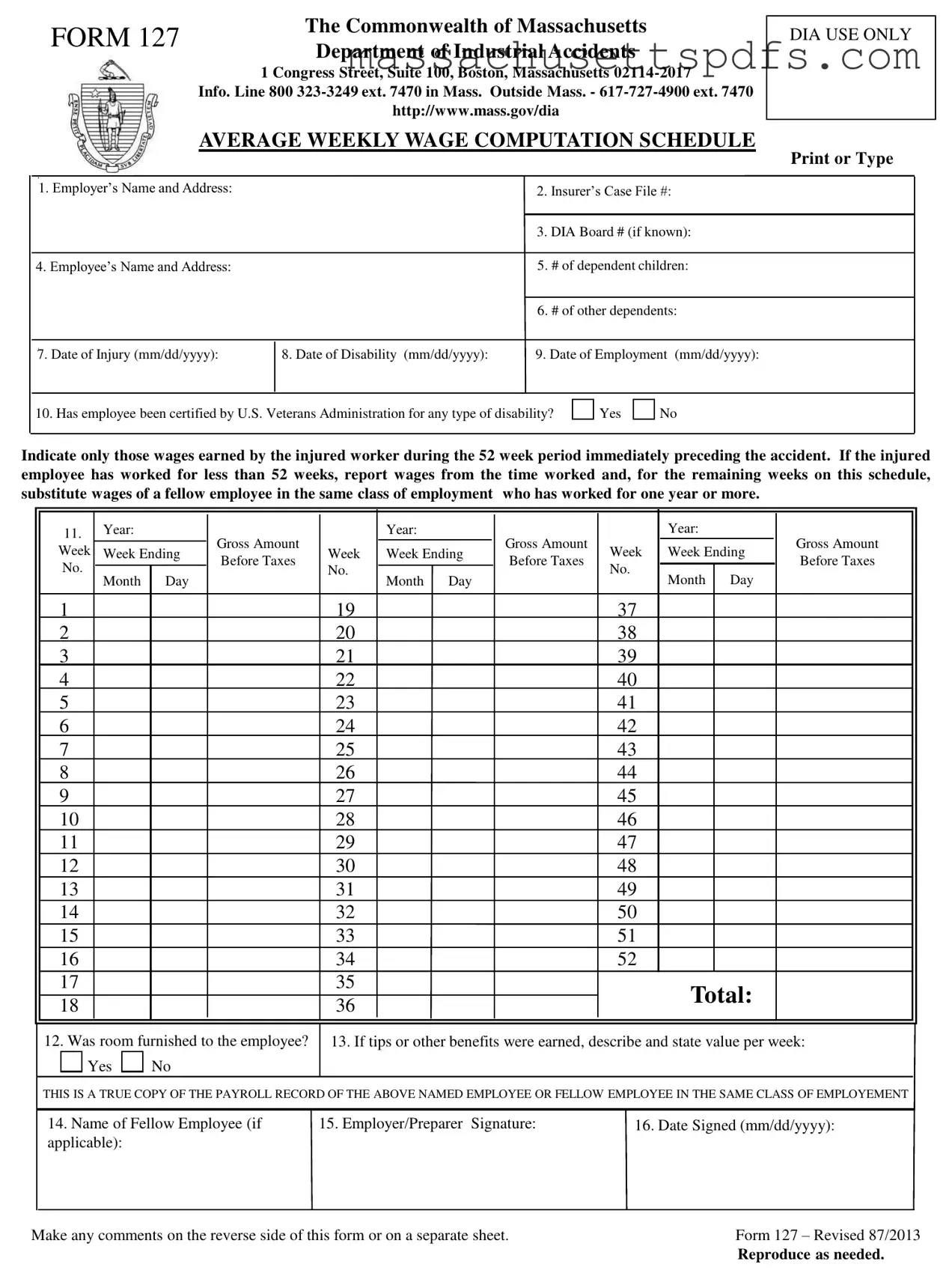Official Massachusetts 127 Template
The Massachusetts 127 form is a document used to calculate an employee's average weekly wage following a workplace injury. This form is essential for ensuring that injured workers receive the appropriate compensation based on their earnings prior to the incident. For those needing to fill out this form, please click the button below.
Launch Editor Here
